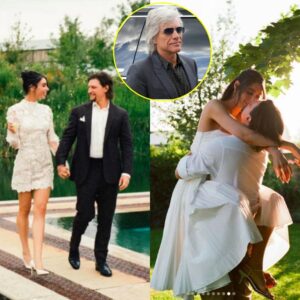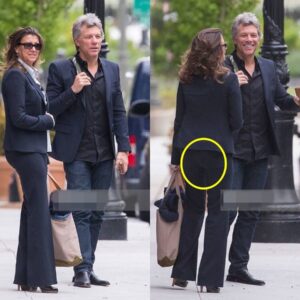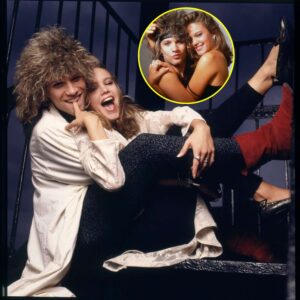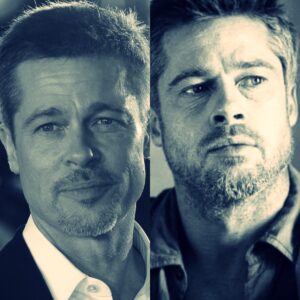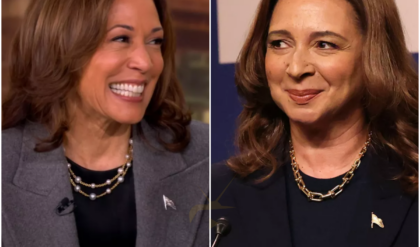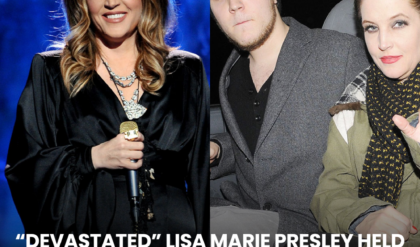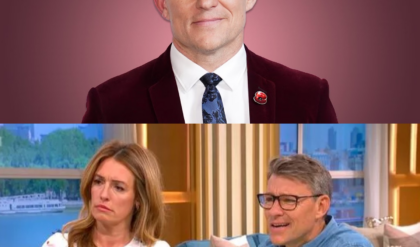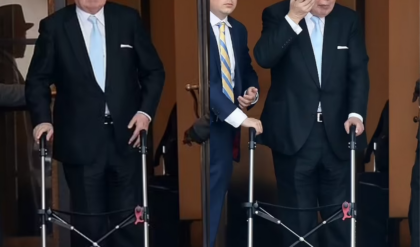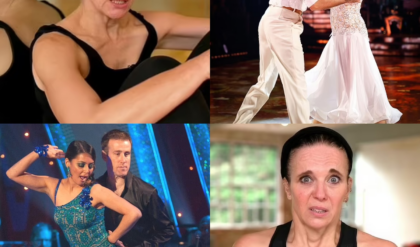How Bon Jovi braved chaos to do one of their most dramatic concerts
34 years ago the band had two performances in Guadalajara, Mexico, but its members never imagined that a “socialist” student organization would put their concerts at risk

It was 1990, the followers of the American group would witness a historic event: Bon Jovi would close their “New Jersey Syndicate Tour” at the Olympic Stadium of the University of Guadalajara (UdeG), Jalisco, after playing in 22 countries for almost 16 months.
All the rockers wanted to be part of that historic event: Bon Jovi’s first tour in Mexico; however, they never thought that they would be met with gunfire, a crashed truck, the possible cancellation of the event and an angry crowd against a group of students.
The Federation of Students of Guadalajara (FEG), a group with “socialist” ideals, alleged that it would not allow the use of the facilities because “the interests of the university community are damaged,” according to a note from the time in the local newspaper El Informador.
In an attempt to stop the massive event, the FEG triggered a violent confrontation. Although the excitement generated by the concert was still present, the adrenaline and anxiety were palpable in the air. The violence also left a significant imprint on the memory of the participants.
“Where will he come, will he come to the city, to Monterrey? Everything that was known came on radio and television. The chilangos used to say ‘tell us where to go’ and it comes out that (Bon Jovi) are going to play in Guadalajara,” recalled Jaime Díaz in an interview with Infobae, who undertook the trip from the country’s capital to the pearl of Guadalajara with two friends, Jorge and Luis, at the age of 21.
After being successful in Monterrey, on February 9 and 10, 1990, the group was going to perform on Friday the 16th at 8:00 p.m. and the next day at 7:00 p.m. in Guadalajara.
The reason for not doing the concert in Mexico City, according to a Chicago Tribune note, was due to a ban by the Mexican government on the rock scene after the controversy generated by the “Avándaro” festival in 1971. The then president, Luis Echeverría, vetoed concerts, singing cafés, recordings and radio broadcasts of this genre, for this reason, the venue was the Technological Stadium of the University of Guadalajara.
The university facilities were taken over by members of the FEG hours before the concert, according to Oscar, another attendee of the event. He added that the stage was already set up and that after the audio test they closed the stadium.
However, a note in El Informador on February 17 of that year mentions that the facilities were taken on Thursday 15: “The FEG board expressed its decision not to allow the concert to take place because the interests of the university community are damaged. The occupation was on Thursday at 7:20 p.m., totally peaceful.”
“Days before we didn’t know if there was going to be a concert. With that thing that they said ‘no, yes, that it was going to be canceled’ and there was no news in form. We arrived a day before the concert in the evening, with our tickets and praying that it would be done,” Jaime recalls.

After traveling to Guadalajara, the attendees were desperate. Uncertainty invaded them because they did not know if they would be able to enter or not to see Bon Jovi.
The president of the FEG, Oliverio Ramos Ramos, had promised to hand over the University’s facilities on February 16 but “there was no certainty about the realization of the concert that would tentatively begin at 11:30 p.m. The debate between the organizing company and the Student Federation was still continuing,” the note mentions.
Although at 5:30 p.m. on Friday the 16th the Public Security authorities reported that the concert had been canceled, the attendees were hopeful that the stadium would be freed up to be able to enter the concert.
“The atmosphere in the stadium facilities was tense and of great reference: hundreds of young people from various parts of the Republic, expressed their discomfort with the occupation of the facilities and shouted for the presentation of the rock group,” mentions the publication of the Guadalajara newspaper.
Things escalated: stones, sticks, blows with bare fists. Armando Álvarez Carbajal, a witness to the events, told Infobae that he decided to step aside. But that was not all, there were even people who decided to make their way by crashing a truck into the main entrance of the facilities, according to Oscar, who was a high school student at the time: “The Olympic doors were knocked down at about 7:00 or 8:00 at night, minutes before the concert.”
A document provided by the UdeG to Infobae recounts the damage suffered by the stadium after the event. On February 19, 1990, the mayor of the university, Aurelio del Toro Navarro mentions that these were “caused by the people who came to witness the artistic event and this was due to the provocation made by the boys of the Federation of Students of Guadalajara.”
He described that the number one access door to the facilities was totally damaged in its structure, as well as 20 meters of the wire and the pipes that supported it.
“It was knocked down with a truck that continued its journey to Gate Number 2 of the Olympic Stadium, impacting the door, causing it to become unbalanced and detaching it, also damaging the façade,” the document mentions.

Once people were inside, panic broke out when a shootout began that left two injured, according to El Informador. “They were Alfredo Aceves Plascencia, 18 years old… who was shot in the left collarbone, and Víctor Francisco Valadez Gutiérrez, 15, who suffered a gunshot wound to the right ankle.”
Oscar recalls that “some ran supporting some, others supporting others, and the brawl broke out there. They were the people who were on strike, I don’t know, about 200, 300 students against 12,000, 15,000 spectators with paid tickets.”
Other breakdowns reported in the UdeG document were damage to four access doors to the university, damage to the foundations of a baseball field to facilitate access to the facilities. Several broken glass, 500 damaged lattices, missing twenty locks with chains, a crown of the bathroom faucet, two showers and eight hooks of the dressing room.
Despite the disaster, the group decided to reschedule the concert the next day, so they performed on Saturday at 12:00 p.m. and at night at 8:00 p.m.
At noon the first presentation was made and according to what Armando remembers, there was no “opening band” because people were already desperate to hear Bon Jovi.
For the second concert, “Rostros Ocultos” was the group that opened, however, the band was pop rock. “They were neither good nor badly received, only that they were more poppy and people already wanted rock […] For the closing of the night’s concert, a mariachi group took the stage,” said Oscar.

Attendees remember that the day had been slightly rainy, Bon Jovi opened with “Lay your hands on me” and closed with “Bad medicine“, two of the group’s most outstanding songs.
Jorge, one of Jaime’s friends, played the drums and his biggest idol was Tico Torres, the drummer of Bon Jovi, he entered with a sign hidden in his jacket that said ‘Tico I want your fuckin stick’, Jaime recalled with a laugh.
Although he found it difficult for his friend to get the drumstick, he wished him good luck, because the concert was at court level and they had to push their way through the crowd.
Jaime received the group along with the crowd with shouts and cheers. It was part of the first massive hard rock concert in the country. “Father song after father song. Everyone went crazy, jumping, screaming, crying. It was a very energetic concert, a lot of sound, a lot of partying.”
The then 21-year-old student remembers hearing various testimonies on the radio from people who traveled to Guadalajara, who recounted their journey. “The euphoria came mainly from suffering to be able to enter the stadium”
“When the concert was over, everyone was fascinated, they left with their hearts in their hands, crying, there were people saying ‘I can die now'”.
Jaime found Luis and told him that he had had to push people and had separated from Jorge, the drummer. Suddenly they saw him walking towards them with a smile on his face.
“What happened?
“I got all the way!”
– And what’s up?
Jorge reached into his jacket and pulled out a drumstick.
-“He saw me and he threw it at me, I almost lost my hair with it”
Bon Jovi’s return to Aztec land
After seeing the chaotic events surrounding the closing of their tour, Bon Jovi set foot on Mexican soil until 1997, seven years later, at the Foro Ideal, which was located on Frontera Street, in San Ángel, Mexico City.
On July 19, 2007 he participated in the Buchanan’s charity event, which took place at the Colegio de San Ildefonso; in 2010 he was at the Foro Sol and in 2013 he filled the same venue where he had DLD as the opening band of his concert to 85% capacity.
Share note:
News
Jon Bon Jovi’s Son Marries at ‘Perfect’ Farmhouse: Stunning Pics from the Five-Day Celebration & Garden Wedding
Jon Bon Jovi’s Son Marries at ‘Perfect’ Farmhouse: Stunning Pics from the Five-Day Celebration & Garden Wedding One of Jon Bon Jovi and Dorothea Bongiovi’s sons married his beloved at a beautiful farmhouse. Breathtaking photos and intriguing details of the…
“Jon Bon Jovi and Dorothea
“Jon Bon Jovi and Dorothea: A Commitment to Philanthropy and Community Impact” Jon Bon Jovi and his wife, Dorothea, have long been recognized for their philanthropy and community involvement. One significant event that showcased their commitment occurred on May 10,…
Jon Bon Jovi: A Rock Icon with a Heart of Gold
Jon Bon Jovi: A Rock Icon with a Heart of Gold Jon Bon Jovi is not just the frontman of the world-renowned band Bon Jovi; he is also a symbol of compassion and generosity in the music industry. With a…
“Jon Bon Jovi and Diane Lane’s Legendary Romance in 1985: The Inspiration Behind ‘You Give Love a Bad Name’?”
“Jon Bon Jovi and Diane Lane’s Legendary Romance in 1985: The Inspiration Behind ‘You Give Love a Bad Name’?” “The Legendary Romance: Jon Bon Jovi and Diane Lane in 1985 – Inspiration for ‘You Give Love a Bad Name’?” …
Inside the Life of a Rock Legend
The Opulent Lifestyle of Jon Bon Jovi: Inside the Life of a Rock Legend Jon Bon Jovi, born John Francis Bongiovi Jr. in 1962 in Perth Amboy, New Jersey, has long been a prominent figure in the world of rock…
Sad news about Brad Pitt
Sad news about Brad Pitt In a recent interview, actor Brad Pitt disclosed that he had prosopagnosia, a rare neurological condition commonly referred to as “facial blindness.” In a New York Times article, Dani Blum outlines the disorder’s symptoms, underlying…
End of content
No more pages to load
